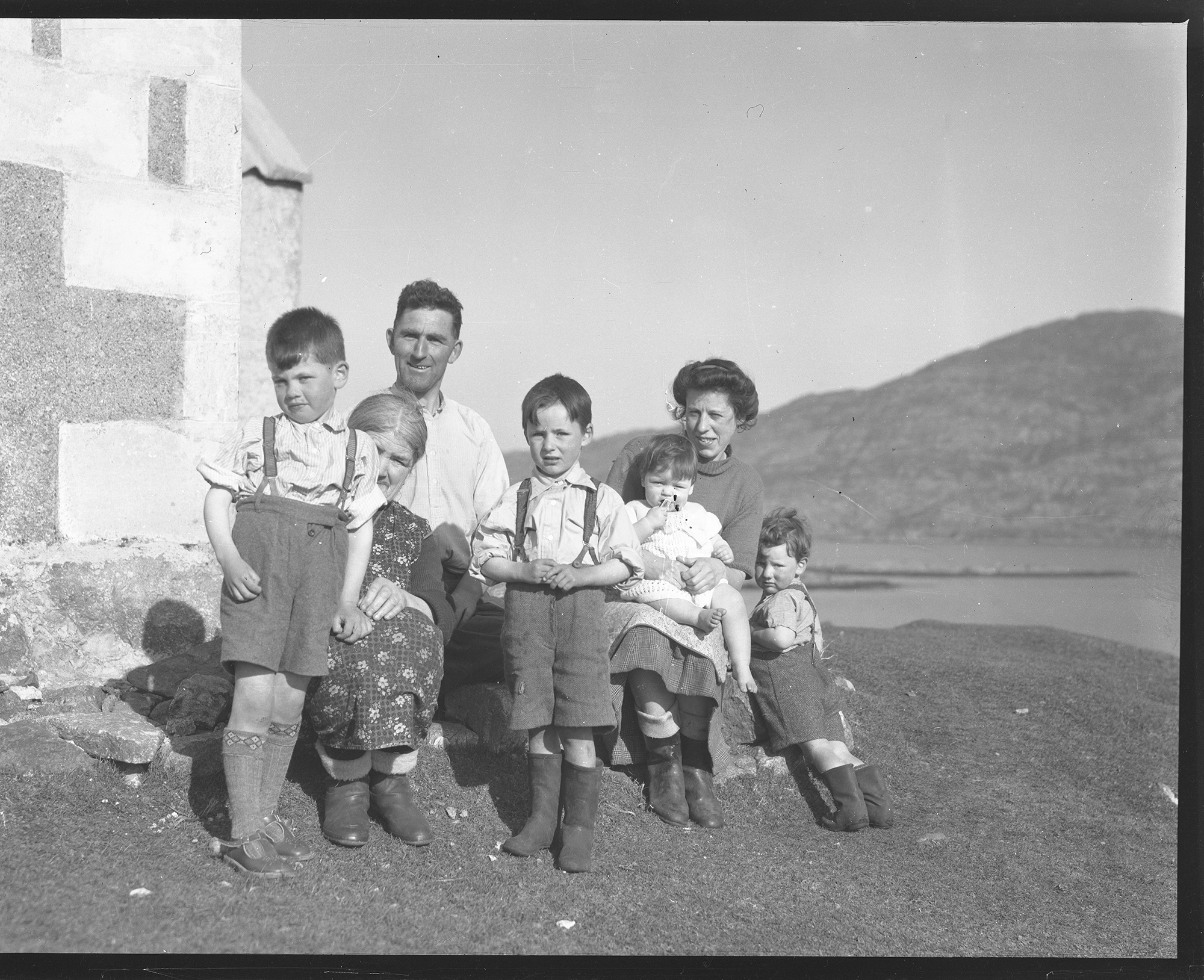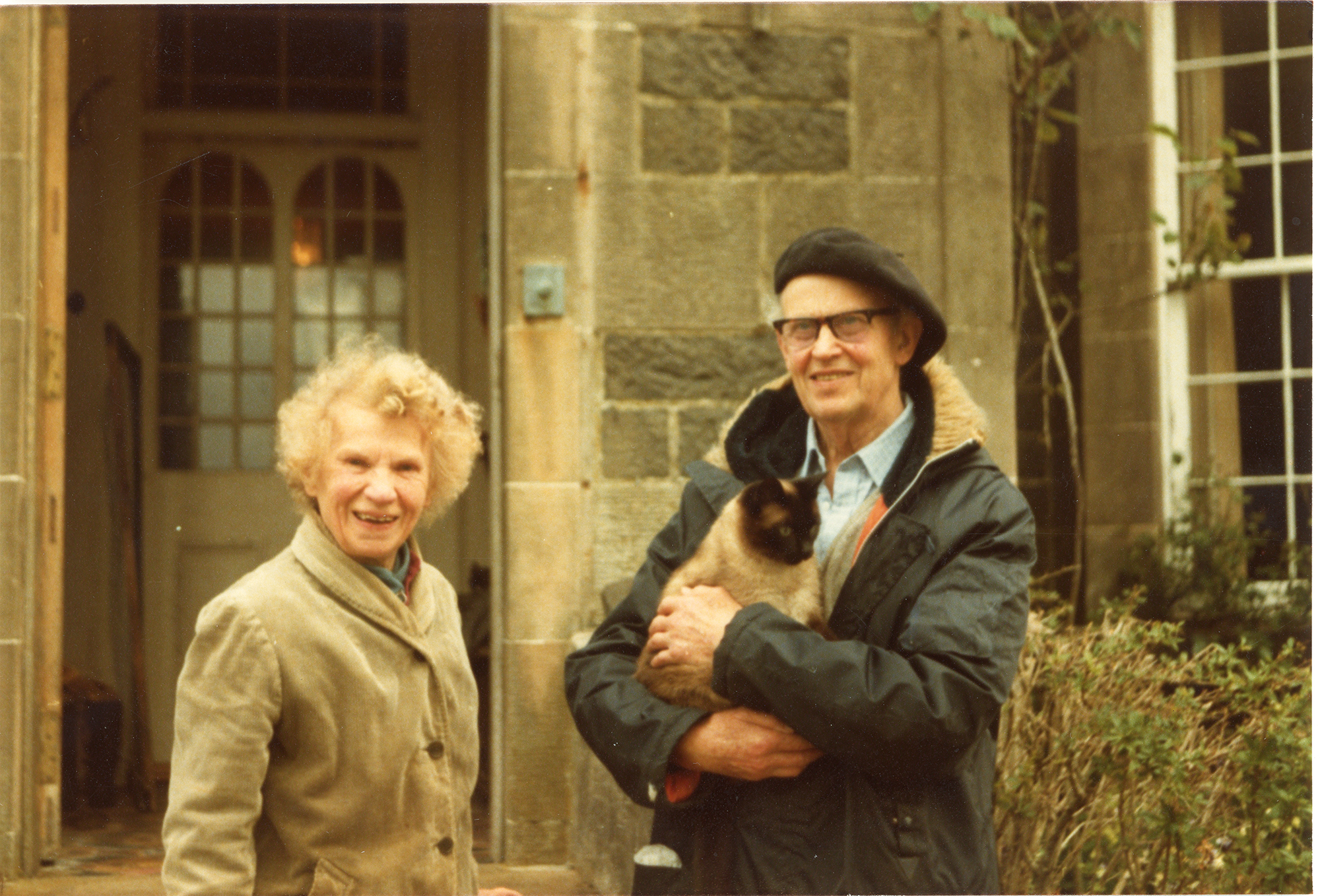Digitising the islands
The majority of the contents of the first few albums in the collection – containing over 1,000 negatives – were taken during Margaret’s first few years on South Uist, when she was living with the MacRaes and beginning to learn Gaelic. I chose to begin the project here so that I get the same introduction to the Hebrides as Margaret had. Even though almost a hundred years separates my work from the moment when the shutter on Margaret’s camera first clicked, my first glimpse was her first, too. It’s hard not to be tempted by the connection this forges between our two separate experiences of looking at South Uist, at its people, and at its past. As the day-to-day work of digitisation involves concentration, repetition and getting to grips with the small details of each specific image, holding on to this thought allows me to connect with the bigger picture as well.

The children of the Campbell family, with their parents Donald John and Mary, and grandmother Marion (Mòr-Bean Aonghais Bhig)
My schedule at the moment consists of donning a fetching pair of purple latex gloves, scanning a negative and noting down its measurements. I describe its condition – is it creased or scratched? Is it torn? Has somebody chopped off the corners? I do this hundreds of times each week and then organise the resulting high-resolution images. I then get to spend time exploring the images themselves, identifying people, places and activities, and writing their descriptions for our digital catalogue, so that they can be discovered by future users.
Between digitising the albums, I’ll be working to share the photographic collection – and Margaret’s story – in galleries and articles like this one. I’ll share stories of Margaret’s work, Hebridean life throughout the 20th century, and the preservation of Gaelic language and traditions – all illustrated by the incredible images that she created. With the help of Canna archivist Fiona Mackenzie and consultant Anna Rothach, we’ll publish galleries of these images with captions in both Gaelic and English.

Margaret and her husband, John Lorne Campbell, in front of Canna House
So, how does the island of Canna fit into all of this? After I’ve worked through the South Uist photographs, there are many more to be digitised that Margaret took of Canna’s people and places. Margaret’s husband, John Lorne Campbell, purchased Canna in 1938, and the two of them lived there in Canna House for the rest of their lives. It is here that the archive is housed.
After seeing the Hebrides through Margaret’s eyes, I can’t wait to follow in her footsteps and head to the islands myself. There’s no telling where she might lead me next …
The Morton Charitable Trust has been funding fieldwork on the National Trust for Scotland’s photographic collections since 2014. In 2018–19, this work will further raise the profile of the collections through research, articles, talks and dedicated projects. The project will also involve the digitisation of the Margaret Fay Shaw photographic archive of mid-20th-century Hebridean life, leading to an updated database with high-quality images.
Stay in touch
Be the first to hear about our latest news, get inspiration for great days out and learn about the work we do for the love of Scotland.